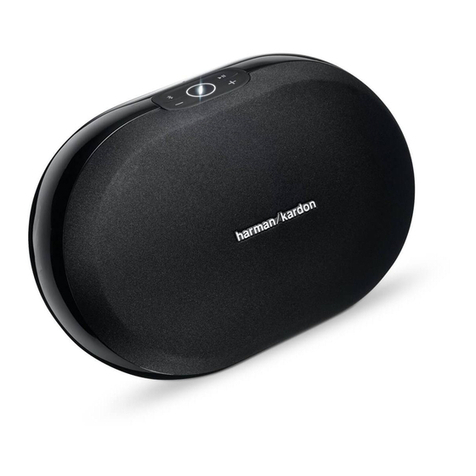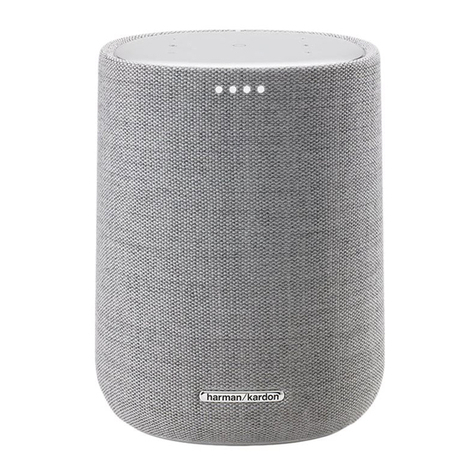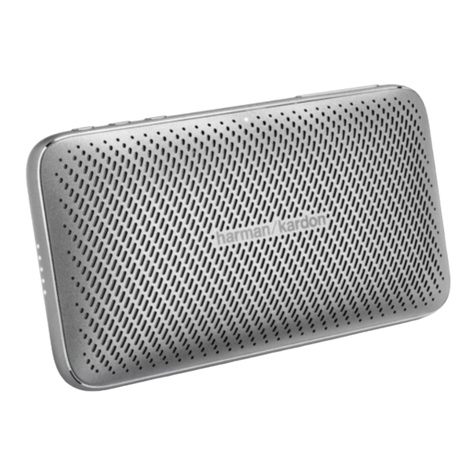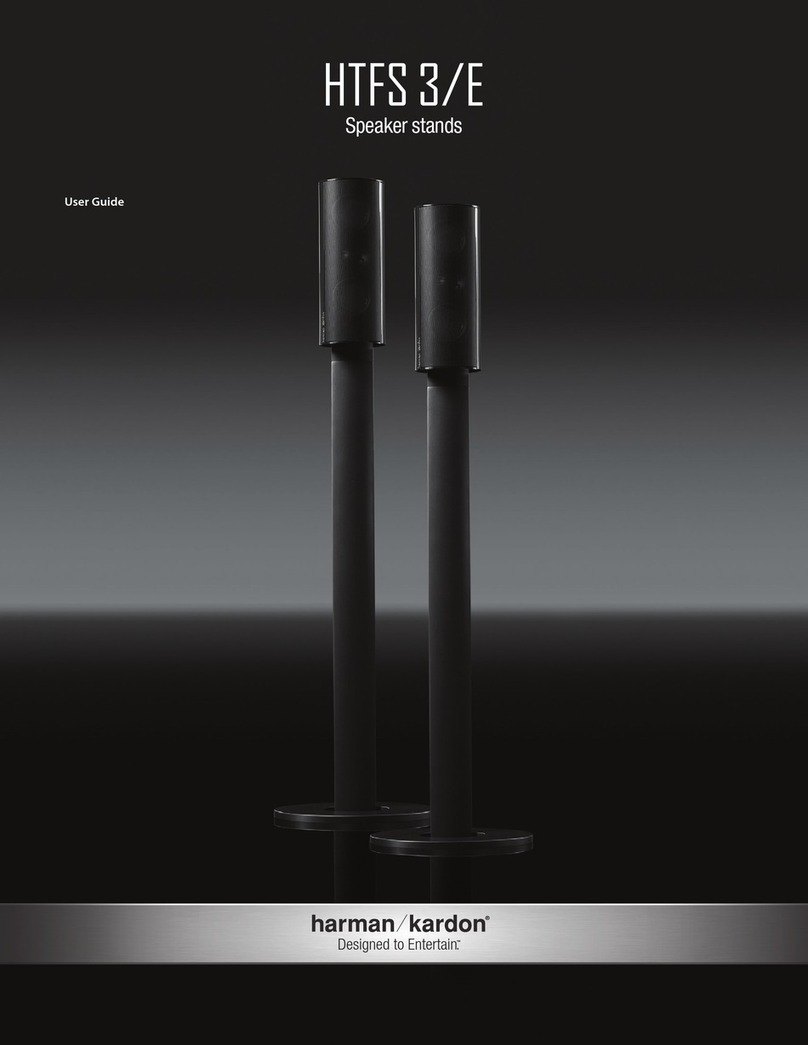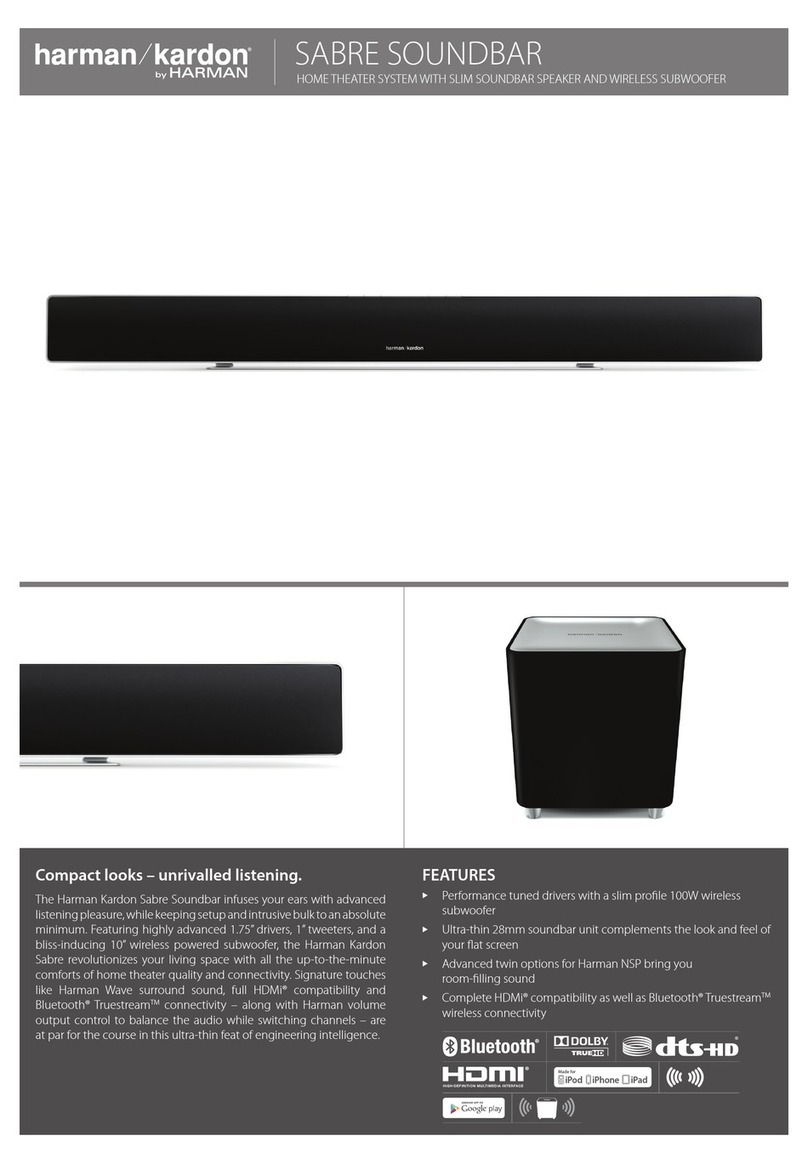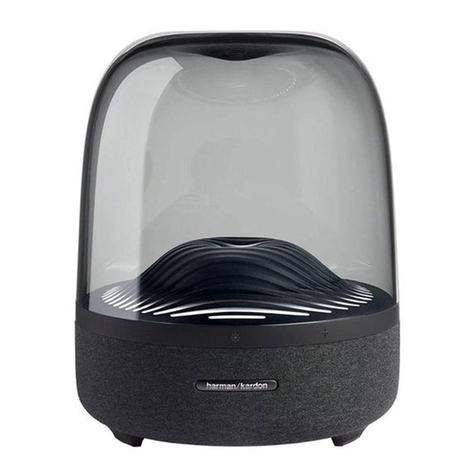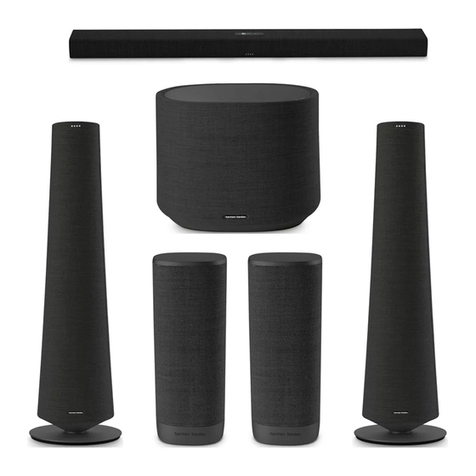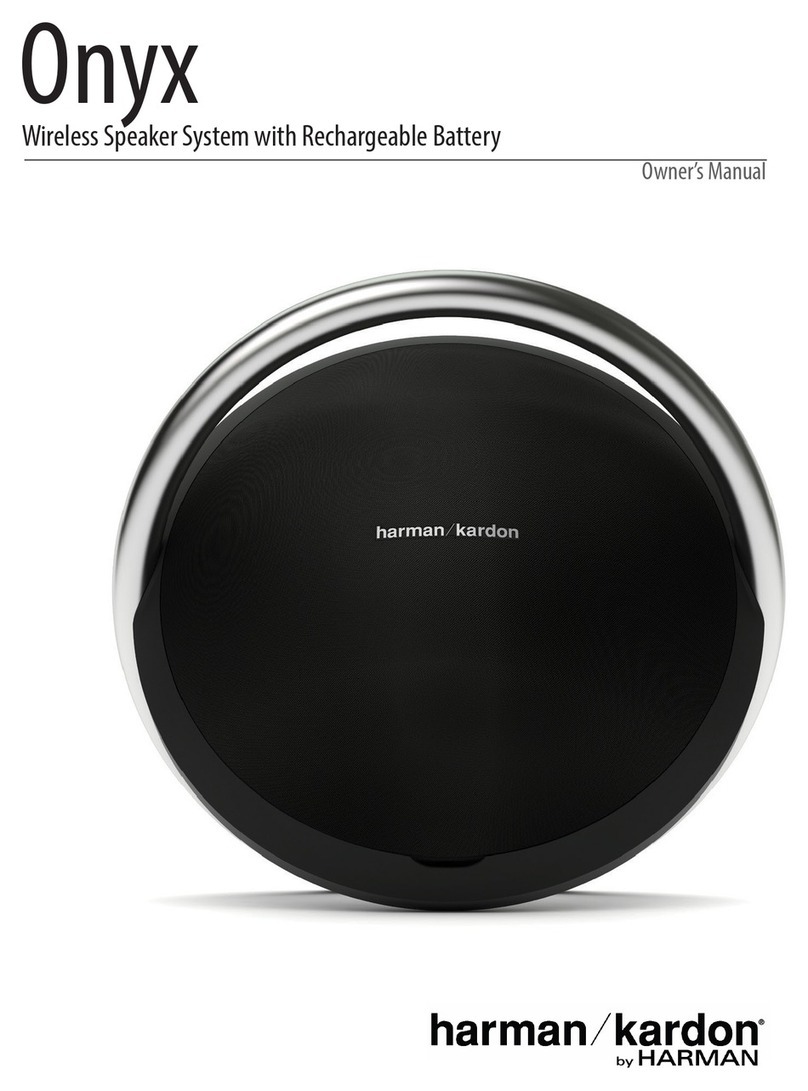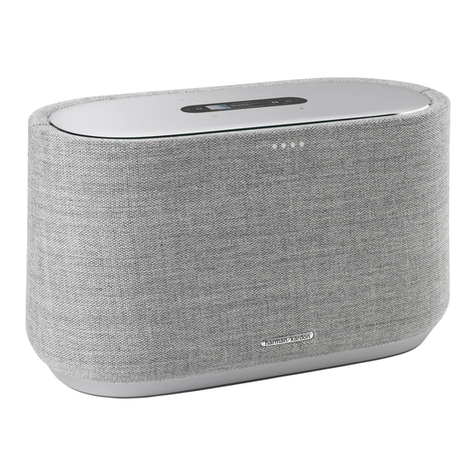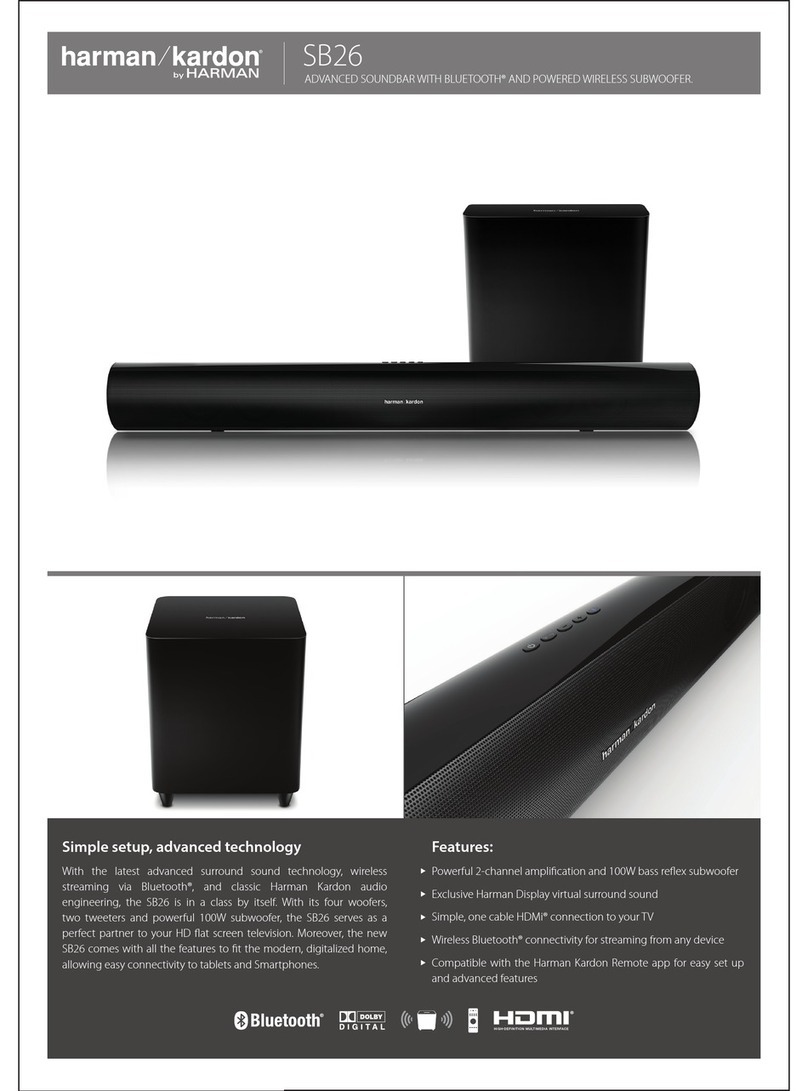SPEAKER CONNECTIONS 5
Connection Guide
IMPORTANT NOTE:
Before making speaker
connections, be certain that your receiver or
audio power amplifier is turned off and,
preferably,unplugged from its AC power
source.
Separate and strip the ends of the speaker
wire as shown. Speakers and electronics
terminals have corresponding (+) and (–)
terminals.Most manufacturers of speakers
and electronics, including Harman Kardon,
use red to denote the (+) terminal and
black for the (–) terminal.
Many newer Harman Kardon receivers con-
form to the new CEA standard and therefore
use a color other than red for the (+) termi-
nal to indicate some speaker positions: e.g.,
blue for surround left positive (+). However,
the black terminal will always be the negative
(–) connection. Please see the owner’s guide
for your AVR Series receiver for further details.
The (+) lead of the speaker wire is often
noted with a stripe or ridge. It is important to
connect
both speakers identically: (+) on the
speaker
to (+) on the amplifier and (–) on
the speaker to (–) on the amplifier. Wiring
“out of phase” results in thin sound,weak
bass and a poor stereo image.
With the advent of multichannel surround
sound systems, connecting all of the speakers
in your system with the correct polarity
remains equally important in order to preserve
the proper ambience and directionality
of the
program material.
To connect the supplied wires to the speaker
terminals,unscrew the binding-post collar
until the pass-through hole in the center
post is visible under the collar. Insert the
bare end of the wire through this hole; then
screw the collar down until the connection is
tight.The hole in the center of each collar is
intended for use with banana-type connectors.
Configuring Your Receiver or
Processor
Many receivers and processors feature pro-
grammable bass-management capability,
which allows the component to output the
lowest frequencies (the bass information)
exclusively to a separate subwoofer speaker,
or to a main speaker that is capable of han-
dling low frequencies, or sometimes to both.
During the setup process you will be asked
to specify whether the speaker for a given
channel is “Large” or “Small.” The terms
“Large” and“Small” do not refer to physical
size, but to the size of the frequency range
the speaker is capable of handling.When
configuring your receiver or processor for
the channels where HKS 2 speakers are
being used, select “Small.”
SPEAKER CONNECTIONS
4MOUNTING OPTIONS
The speakers may be placed on a shelf. They
may be tilted upwards simply by tilting them
back onto their sculpted surfaces.
They may be wall-mounted using the
supplied brackets.
MOUNTING OPTIONS
Insert the knob supplied in the hardware
packet into the bracket as shown. Then place the speaker on the bracket
and secure it from below using the
supplied screw.
Wall-Mounting
Attach the bracket to the wall.We strongly
recommend that you position the speakers
so that the mounting screws used connect
directly to a wooden wall stud. If that is not
possible, use optional wall anchors that are
rated to support at least twenty-five pounds,
and install them following the manufacturer’s
instructions carefully.
You are responsible for proper selection and
use of mounting hardware, available through
hardware stores, to properly and safely wall-
mount the speakers.




